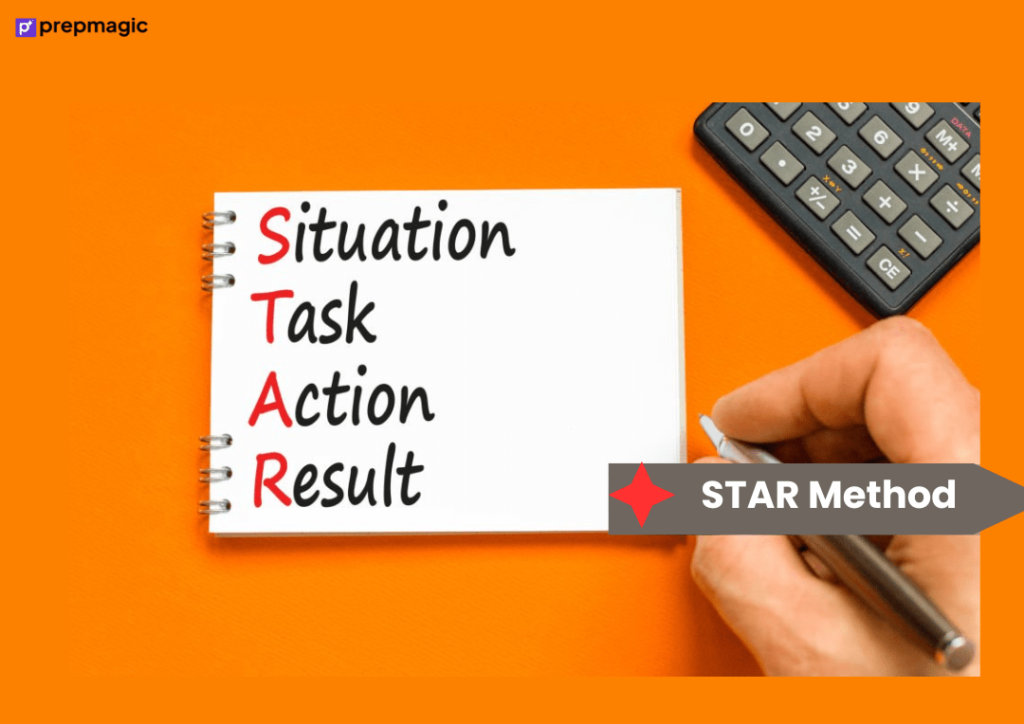Job interviews can be daunting, especially when faced with behavioral interview questions. One proven technique to handle these effectively is the STAR method. In this comprehensive guide, we’ll delve into what the STAR method is, how to use it, and provide real-world STAR method examples to help you ace your next interview.
What is the STAR Method?
The STAR Method is a powerful interview technique designed to help candidates effectively communicate their experiences and skills. STAR stands for Situation, Task, Action, and Result. By structuring responses around these four components, job seekers can provide clear, concise, and compelling answers that demonstrate their qualifications and fit for the role.
Why Use the STAR Method?
The STAR interview method is favored by recruiters and hiring managers because it provides concrete evidence of your skills and experiences. It allows you to present your answers in a logical, easy-to-follow format, showcasing your problem-solving abilities and accomplishments.
Breaking Down the STAR Method
Situation
Begin by setting the scene. Describe the context within which you performed a task or faced a challenge at work. This part should provide enough detail to give the interviewer a clear picture but remain concise.
Example: “In my previous role at XYZ Company, we were facing a significant drop in website traffic due to a recent Google algorithm update.”
Task
Next, explain the specific task you were responsible for in that situation. This focuses on what needs to be accomplished.
Example: “I was tasked with analyzing our website’s SEO performance and developing a strategy to recover our lost traffic.”
Action
Describe the actions you took to address the task. Be specific about what you did, why you did it, and the skills you used.
Example: “I conducted a thorough SEO audit, identified key areas for improvement, and implemented a series of changes including updating content, optimizing keywords, and improving site speed.”
Result
Finish by explaining the outcome of your actions. Highlight the positive results, whether it’s a performance improvement, solving a problem, or any measurable benefits.
Example: “As a result, our website traffic increased by 30% over the next three months, and we regained our top rankings for several competitive keywords.”
How to Prepare for STAR Method Interview Questions
Research Common Behavioral Questions: Apply the STAR approach to become acquainted with frequent behavioral interview questions. Some Examples are:
- “Can you describe a time when you faced a challenging project?”
- “How do you handle tight deadlines?”
- “Can you give an example of how you worked effectively in a team?”
Reflect on Your Experiences: Think about past work experiences where you demonstrated key skills such as leadership, problem-solving, teamwork, and adaptability.
Practice Your Stories: Use the STAR method to structure your responses and practice delivering them confidently.
Be Specific and Quantify Your Achievements: Whenever possible, use specific numbers to quantify your results. This makes your accomplishments more concrete and impressive.
Employers Love STAR Interview Questions – Why is that?
Employers favor STAR interview questions because they provide a structured and objective way to evaluate candidates. Here’s why they are so effective:
1. Objectivity
STAR questions help remove ambiguity and subjectivity from the interview process. Candidates must provide specific examples, making it easier for employers to compare responses.
2. Insight into Past Behavior
Past behavior is often a good predictor of future performance. STAR questions allow employers to understand how candidates have handled situations similar to those they might face in the new role.
3. Clarity and Consistency
The structured format ensures that candidates stay focused and provide relevant information, making it simpler for interviewers to assess their qualifications consistently.
Key Factors That Make a Good Answer Great
When answering STAR interview questions, two key factors can make your responses stand out:
- Specificity: Provide detailed and specific examples. Avoid vague descriptions; instead, focus on concrete actions and outcomes.
- Relevance: Ensure your examples are relevant to the job you are applying for. Highlight experiences that showcase your skills and qualifications pertinent to the role.
-

STAR Method Examples Answer
Example 1: Handling a Difficult Client
Situation: At my previous job at ABC Agency, we had a client who was unhappy with our recent marketing campaign.
Task: I was assigned to address the client’s concerns and find a way to improve the campaign’s performance.
Action: I scheduled a meeting with the client to understand their specific concerns. After gathering their feedback, I collaborated with our creative team to revise the campaign, focusing on the elements the client had highlighted.
Result: The revised campaign performed significantly better, increasing the client’s customer engagement by 25%. The client was pleased with the outcome and extended their contract with us for another year.
Example 2: Leading a Team Through Change
Situation: During a major restructuring at my previous company, I was promoted to lead a new team that had never worked together before.
Task: My goal was to ensure a smooth transition and maintain team productivity during the restructuring.
Action: I organized team-building activities and set up regular check-in meetings to foster open communication. I also clearly outlined our objectives and individual responsibilities to ensure everyone was on the same page.
Result: My team quickly adapted to the new structure, and we exceeded our quarterly targets by 15%, despite the initial challenges of the transition.
STAR Method Example for Problem-Solving Competency
To better understand the STAR method, let’s look at an example related to problem-solving competency.
Question: “Can you describe a situation where you had to solve a difficult problem?”
Answer:
- Situation: In my previous role as a project manager, we encountered a significant issue when a key supplier failed to deliver materials on time, jeopardizing our project deadline.
- Task: My responsibility was to find an immediate solution to prevent delays and keep the project on track.
- Action: I quickly organized a meeting with the team to brainstorm alternative solutions. We decided to source the materials from a local supplier temporarily while negotiating expedited delivery from the original supplier. I also implemented a more rigorous follow-up system to ensure timely deliveries in the future.
- Result: As a result, we managed to complete the project on time, maintaining client satisfaction. Additionally, our new follow-up system reduced delivery delays by 30% in subsequent projects.
This example demonstrates a clear, structured approach to problem-solving, showcasing the candidate’s ability to handle unexpected challenges effectively.
How to Answer Interview Questions with 100% Confidence
To answer any STAR interview question with confidence, follow these steps:
- Prepare in Advance: Reflect on your past experiences and identify examples highlighting your skills and achievements. Practice recounting these examples using the STAR method.
- Understand the Job Requirements: Tailor your examples to match the skills and qualifications the employer is seeking. This shows you are a good fit for the role.
- Be Concise: Keep your answers focused and to the point. Avoid unnecessary details that do not add value to your response.
- Practice, Practice, Practice: Practice your answers in front of a mirror or with a friend. You will get more at ease and self-assured the more you practice.
Common STAR Method Interview Questions
To better prepare, here are some behavioral interview questions using the STAR method:
- “Tell me about a time when you committed a mistake. How did you manage it?”
- “Describe a situation where you had to work under pressure.”
- “Can you give an example of a goal you set and how you achieved it?”
Tips for Using the STAR Interview Technique
- Keep It Relevant: Choose relevant examples for the job you are applying for.
- Be Concise: While providing enough detail is important, avoid rambling. Keep your answers focused and to the point.
- Showcase Your Skills: Highlight the skills and qualities that make you a strong candidate for the position.
- Practice Makes Perfect: The more you practice using the STAR method, the more natural your responses will become.
Conclusion
Mastering the STAR method can significantly improve your performance in job interviews. By structuring your responses to highlight your skills and achievements clearly, you can provide compelling evidence of your qualifications. Remember to prepare thoroughly, practice your stories, and stay concise and relevant. With these tips, you’ll be well-equipped to ace your next interview using the STAR method.
Additional Resources
For further reading and preparation, consider exploring these resources:
- “The STAR Method: A Step-by-Step Guide to Behavioral Interviews” by Expert Interview Coach
- Online STAR method interview courses and practice platforms
- Company-specific interview preparation guides are available on their career pages
By leveraging the STAR method, you’ll not only boost your confidence but also demonstrate your capabilities effectively, making you a standout candidate in any job interview.
FAQs
What are behavioral interview questions?
A: Behavioral interview questions are designed to assess how you have handled various situations in the past. They often start with phrases like “Tell me about a time when…” or “Can you give an example of…”.
Why is the STAR method effective?
A: The STAR method is effective because it provides a clear, concise, and structured way to answer interview questions, making it easier for interviewers to understand your experiences and accomplishments.
Can the STAR method be used for all interview questions?
A: While the STAR method is particularly useful for behavioral questions, it can also be adapted to answer other types of questions where specific examples are beneficial.
By integrating these strategies and tips, you’ll enhance your interview technique and increase your chances of landing your desired job. Good luck!
